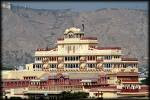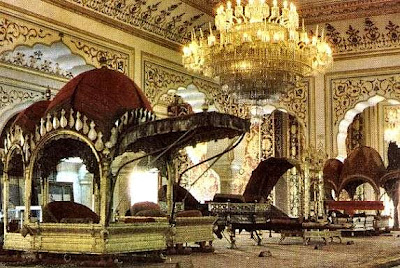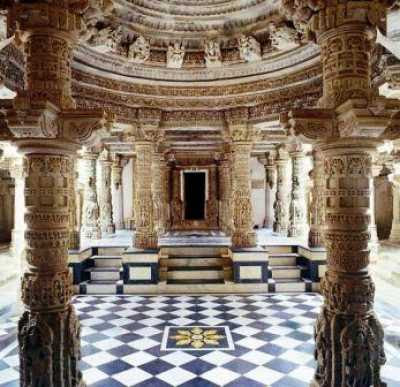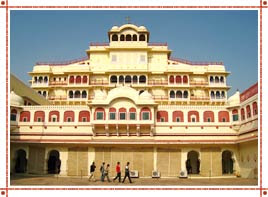

Depicting the traditional Mughal and Rajputana art and architecture in its best way, the City Palace of Jaipur is one of the most magnificent palatial structure of the country. Known worldwide for its architectural valour and opulence, the City Palace complex draws maximum number of tourists coming to visit Jaipur, one of the hottest tourist spot and best called as the Pink City of India.
Built by Raja Sawai Jay Singh, and located in the heart of Old Jaipur, the City Palace with its architectural grandeur is one of the most striking example of Mughal and Rajputana art and architectural style. Besides being of greater architectural and historical significance, the City Palace is also a perfect reminder of royal past, enjoyed by Rajput rulers of Rajasthan.
The large area of City Palace, divided into line of courtyards, gardens and palaces, is now turned into museum, though some parts of the palace still act as residence of royal family. Complex, such as Chandra Mahal and Mubarak Palace are of greater significance due to their architectural elegance. The museum of the palace combines the biggest attraction for tourists as its galleries have abundant of Persian, Rajasthani and Mughal rare paintings, miniatures, Hindu manuscripts and artifacts.
Must See and Do!
See the unique architectural work: Marbled gate, carved pillars and grand courtyard along with the whole complex are stunning in their architectural beauty. Visiting City Palace will make you quite familiar with the perfect and rich lend of Mughal and Rajputana art and architecture.
Visit the royal armoury: One of the important place to visit in the complex is the royal armoury having large number of arsenals, which were used by rulers during wars and wildlife hunting. Interestingly, some of the arms date back to 15th century.
Glue to the art gallery: The most significant place, an art lover will love to glue to is, of course, the art gallery of the palace. Best watch at the gallery are many of the Persian, Mughal and Rajasthani paintings, hand written Hindu manuscripts and sterling silver vessels.
Worship at the temple: The Govind Temple lying in the centre of Chandra Mahal and Badal Mahal is of greater importance for the whole city. Do visit and worship at this beautiful temple, which is an innate part of the City Palace.






